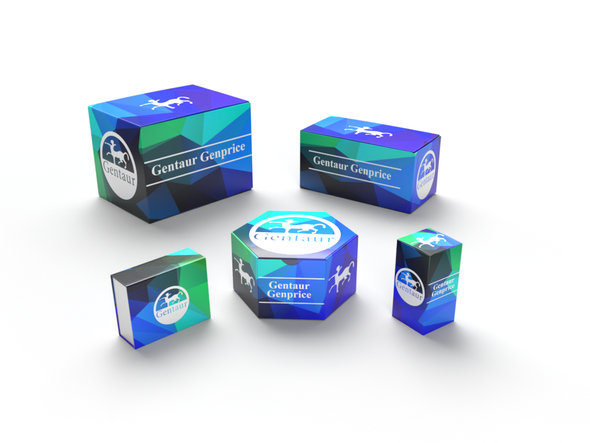749
Human CC-chemokine receptor 1 (CCR1) ELISA Kit | KTE62288
- SKU:
- 749-KTE62288
- Availability:
- Usually ships in 5 working days
Description
Human CC-chemokine receptor 1 (CCR1) ELISA Kit | KTE62288 | Gentaur UK, US & Europe Distribution
Application: This Human CC-chemokine receptor 1 (CCR1) ELISA Kit employs a two-site sandwich ELISA to quantitate CCR1 in samples. An antibody specific for CCR1 has been pre-coated onto a microplate. Standards and samples are pipetted into the wells and anyCCR1 present is bound by the immobilized antibody. After removing any unbound substances, a biotin-conjugated antibody specific for CCR1 is added to the wells. After washing, Streptavidin conjugated Horseradish Peroxidase (HRP) is added to the wells. Following a wash to remove any unbound avidin-enzyme reagent, a substrate solution is added to the wells and color develops in proportion to the amount of CCR1 bound in the initial step. The color development is stopped and the intensity of the color is measured.
Detection Method: Colorimetric
Conjugate: N/A
Sample Type: Cell culture supernatants#Serum#Plasma#Other biological fluids
Assay Type: Multiple steps standard sandwich ELISA assay with a working time of 3-5 hours. It depends on the experience of the operation person.
Kit Component: • Human CC-chemokine receptor 1 microplate
• Human CC-chemokine receptor 1 standard
• Human CC-chemokine receptor 1 detect antibody
• Streptavidin-HRP
• Standard diluent
• Assay buffer
• HRP substrate
• Stop solution
• Wash buffer
• Plate covers
Features & Benefits: Human CC-chemokine receptor 1 (CCR1) ELISA Kit has high sensitivity and excellent specificity for detection of Human CCR1. No significant cross-reactivity or interference between Human CCR1 and analogues was observed.
Calibration Range: Please inquire
Limit Of Detection: Please inquire
Usage Note: • Do not mix components from different kit lots or use reagents beyond the kit expiration date.
• Allow all reagents to warm to room temperature for at least 30 minutes before opening.
• Pre-rinse the pipet tip with reagent, use fresh pipet tips for each sample, standard and reagent to avoid contamination.
• Unused wells must be kept desiccated at 4 °C in the sealed bag provided.
• Mix Thoroughly is very important for the result. It is recommended using low frequency oscillator or slight hand shaking every 10 minutes.
• It is recommended that all samples and standards be assayed in duplicate or triplicate.
Storage Instruction: The unopened kit should be stored at 2 - 8°C. After opening, please store refer to protocols.
Shipping: Gel pack with blue ice.
Precaution The product listed herein is for research use only and is not intended for use in human or clinical diagnosis. Suggested applications of our products are not recommendations to use our products in violation of any patent or as a license. We cannot be responsible for patent infringements or other violations that may occur with the use of this product.
Background: CCR1 is a member of the beta chemokine receptor family, which belongs to G protein-coupled receptors. The ligands of this receptor include macrophage inflammatory protein 1 alpha (MIP-1 alpha), regulated on activation normal T expressed and secreted protein, monocyte chemoattractant protein 3, and myeloid progenitor inhibitory factor-1 (MPIF-1) . Chemokines and their receptors, which mediate signal transduction, are critical for the recruitment of effector immune cells to the site of inflammation. Knockout studies of the mouse homolog suggested the roles of this gene in host protection from inflammatory response, and susceptibility to virus and parasite. This gene and other chemokine receptor genes, including CCR2, CCRL2, CCR3, CCR5 and CXCR1, are found to form a gene cluster on chromosome 3p.
Alternative Names: CCR1; CD191; CKR-1; CKR1; CMKBR1; HM145; MIP1aR; SCYAR1; RANTES receptor
Search name: CCR1; CD191; CKR-1; CKR1; CMKBR1; HM145; MIP1aR; SCYAR1; RANTES receptor
Tag: CCR1






